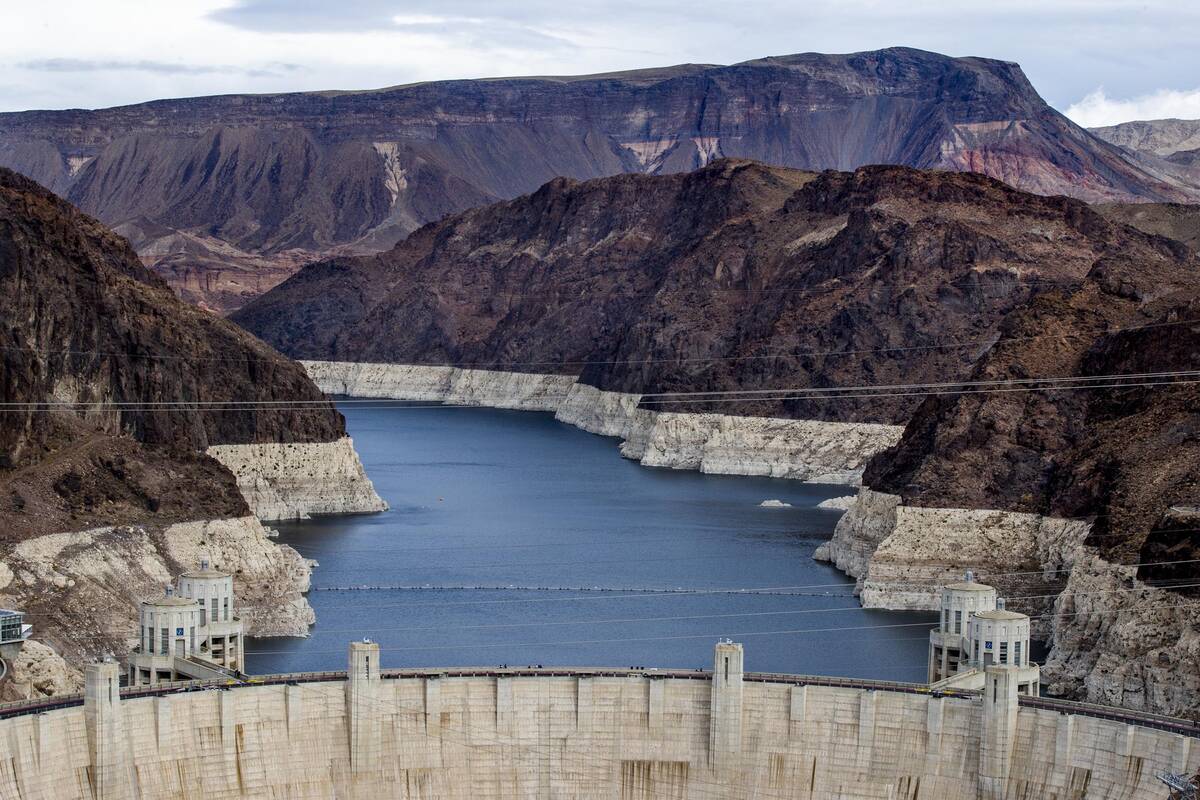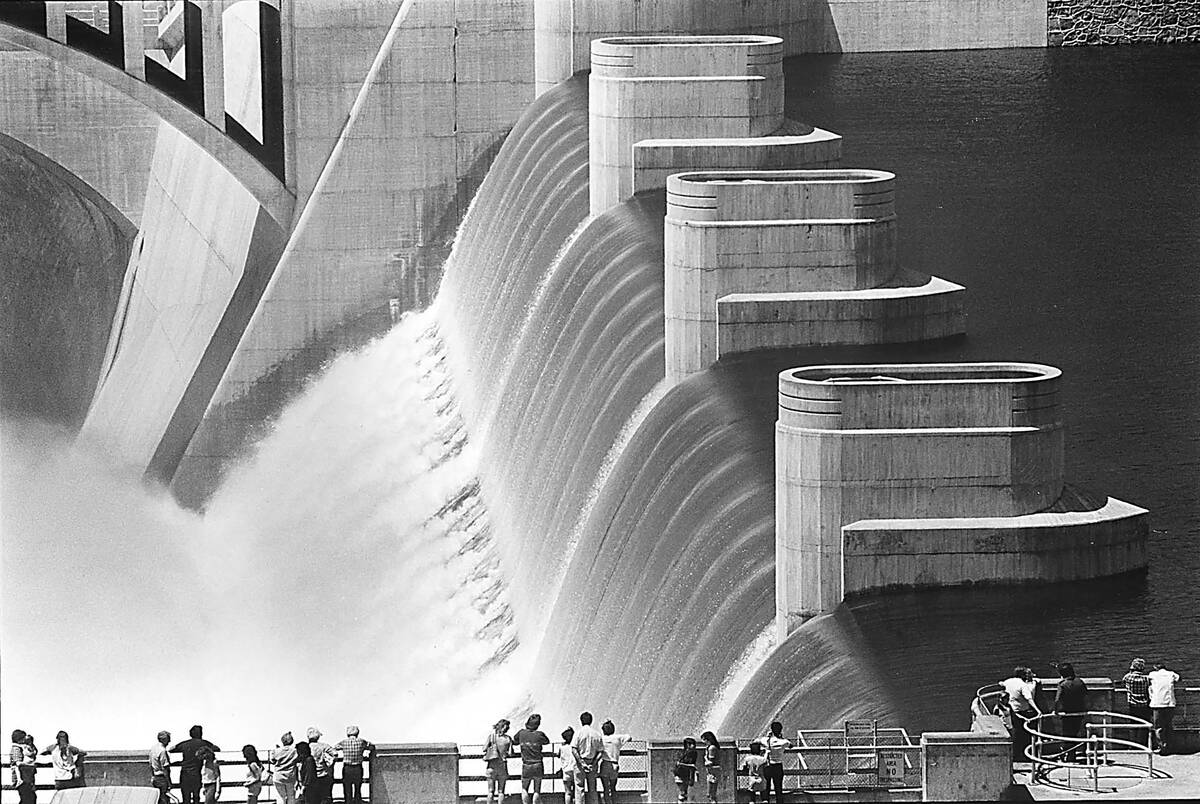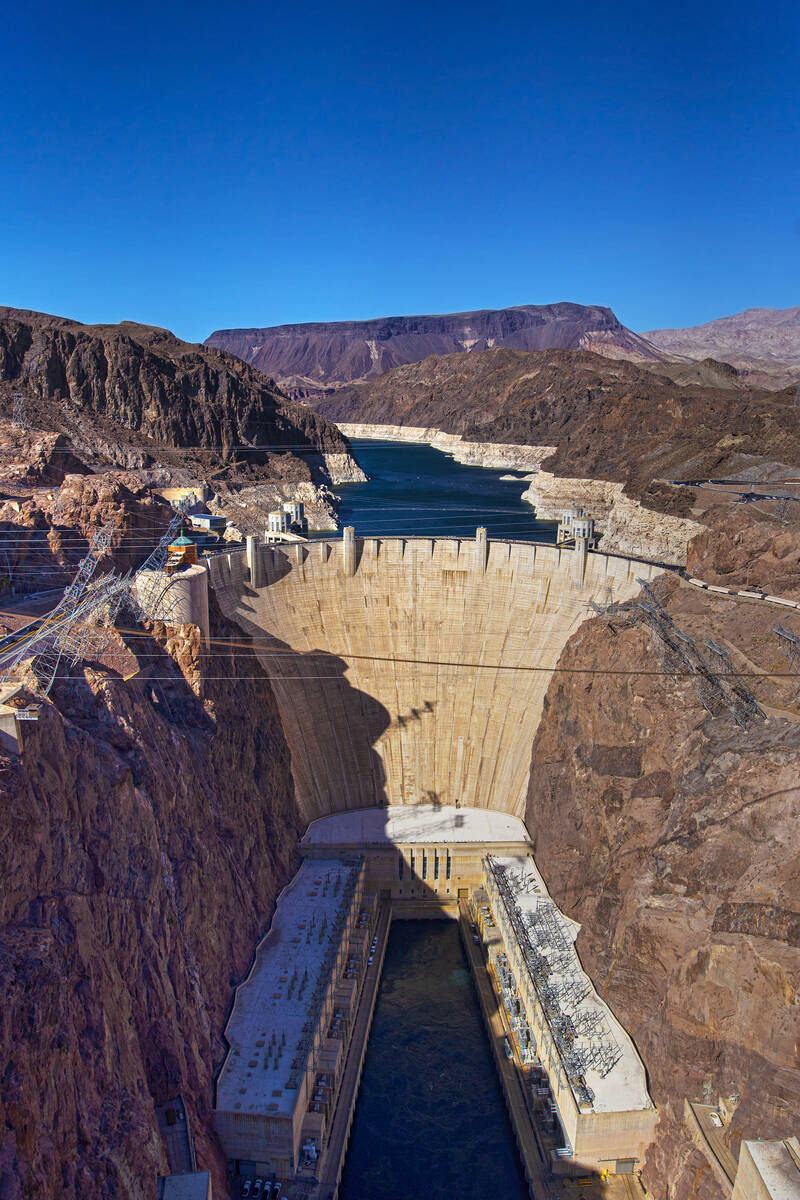Colorado River system safe — for now, say officials
Life is a bit more certain on the shores of Lake Mead, and hopes are it stays that way.
The heavy snowfall last winter and ensuing runoff have bought time for Bureau of Reclamation officials, dozens of governing entities and 40 million users of Colorado River water to fix decades of increasing drought problems.
This week, the bureau released a document known as a revised draft supplemental environmental impact statement, and the Biden administration hailed the efforts to protect the stability and sustainability of the Colorado River Basin.
Decades of steady decline in the reservoir system that provides Southern Nevada with 90 percent of its water has been at least slowed, thanks to a rare and bountiful snowmelt combined with shrinking water usage.
But the challenges of having less water after 23 years of drought in the Southwest have not gone away.
“The Colorado River Basin’s reservoirs, including its two largest storage reservoirs Lake Powell and Lake Mead, remain at historically low levels,” Bureau of Reclamation Commissioner Camille Calimlim Touton said in a statement Wednesday.
Lake Mead and Lake Powell recently dropped to about 25 percent capacity, dangerously close to endangering water users and electricity generation.
Several factors are working together in an attempt to overcome more than 20 years of decreasing water flows, including:
— Winter snowmelt was 145 percent above normal, allowing Lake Mead to rise to 34 percent full with Lake Powell at 37 percent.
— Rules that regulated water use for decades are being reworked. Current guidelines established in 2007 expire at the end of 2026, but prolonged drought conditions that sharply cut water flows “pose unacceptable risks to routine operations of Glen Canyon and Hoover dams,” says the revised document released this week. The hope is to have new guidelines in place as soon as possible.
— The Bipartisan Infrastructure Law is providing more than $8 billion to help fund improvements and efficiencies in water systems over the next five years.
— The three lower basin states, including Nevada, California and Arizona, collectively developed a plan to conserve 3 million acre-feet by 2026, a decline of 14 percent across the Southwest. The three states already have saved a million acre-feet, according to Southern Nevada Water Authority spokesman Bronson Mack.
— In Nevada, consumptive water usage is on track to be 200,000 acre-feet by the end of 2023. It’s the lowest in any year since the 1990s, Mack said. Last year’s usage was 223,000 acre-feet. Under current rules, the state is allowed to use 275,000 acre-feet annually. The amount not used will be stored in Lake Mead, as well as any unused water allotments for California and Arizona.
The lake stood at nearly 1,066 feet above sea level Thursday at Hoover Dam, about a foot off where it was exactly two years ago. The spring runoff and outflow from Glen Canyon Dam has raised the lake level about 22 feet since mid-March.
“Last season we were genuinely worried that boating at Lake Mead might be over,” said Vance Randall, a veteran of 15 years of boating on the lake. “After the summer, we feel like boating at Lake Mead will be around for a long time.”
Nevada water reductions
Reduced water use in Nevada is coming from many avenues of conservation, Mack said. The two main avenues are better adherence to seasonal watering restrictions and the consistent removal of grass in favor of drip-irrigation landscaping.
“Two years ago we had about 50 percent (of residents) following water restrictions. Now it is about 75 percent,” he said.
Any removal of grass leads to a permanent reduction of water use, Mack noted, adding that it takes a column of water 10 feet deep to annually water a square foot of grass while drip irrigation requires less than a 3-foot column per year.
Other measures coming into play this year and going forward include a restriction on the size of home swimming pools, decreased water allotments for golf courses and a prohibition on new installations of evaporative cooling systems.
The weather in 2023 was also a help, Mack said.
“We had a lot of good rainy days and some good monsoon days,” he said. “That allows people to reduce or turn off outdoor watering, but it also cools the environment, and evaporative cooling systems that are working to cool indoor spaces don’t have to work as hard.”
Southern Nevada has been a world leader in water conservation for decades, Mack noted, but changing conditions on the Colorado River mean more must be done.
“We continue to find inefficiencies in water use and put together programs, policies or procedures to make that inefficiency more efficient,” he said. “We simply have to implement a strategy to use less.”
Contact Marvin Clemons at mclemons@reviewjournal.com.



















